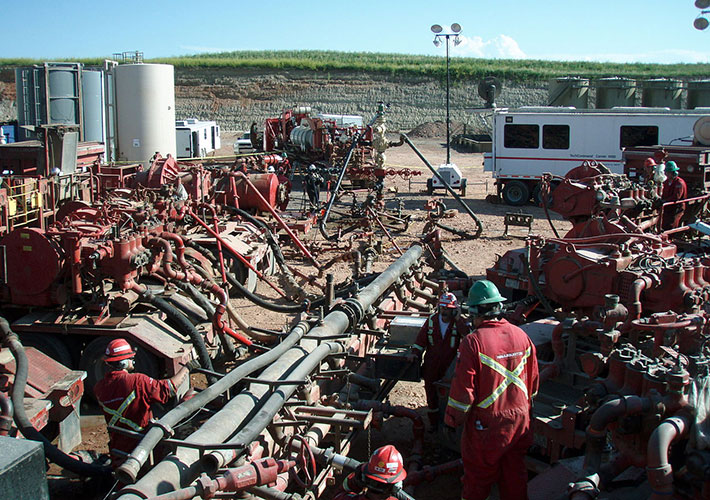
Managing the Data on Hydraulic Fracturing
The basic elements behind hydraulic fracturing have been around for decades, but recent technological advances have led to an enormous growth in fracking operations over the last 15 years. Public debate on the health, safety, and environmental aspects of fracking has intensified, but this debate is often hampered by a lack of information or poorly managed data.
A proposed new ASTM International standard may help bring clarity.
ASTM International’s committee on soil and rock (D18) has been working on a proposed standard (WK42803) that will offer recommendations for how to collect, manage, report, and access data associated with the process of hydraulic fracturing for oil and gas development in North America.
“The goal of this standard is to foster more transparency regarding oil and gas development involving hydraulic fracturing through improved information delivery to the public,” says ASTM member Tom Smith. “The guide examines the regulatory frameworks of data flow, reporting, and information delivery, and offers suggestions for improving the communication throughout all oil and gas development operations.”
Smith notes that much of this information is being collected, but it is often not in a form that is helpful. In addition, he says, hydraulic fracturing raises environmental, health, and safety concerns that were not being contemplated when legacy reporting systems were first developed.
Smith says that the proposed guide presents information and options that will address these improvement opportunities and, ultimately, advance the availability of more comprehensive, publicly accessible information that is relevant to various stakeholders’ interests in hydraulic fracturing.
The proposed guide will allow for more consistent approaches to data collection, management, and evaluation, which is necessary to ensure the design and construction of safe oil and gas development operations.
The standard covers three broad categories in which most decisions are made: planning and permitting; regulatory compliance; and impacts to human health and environment.
A wide range of stakeholders involved in oil and gas development activities will find the proposed standard useful, including:
- Operators;
- Consulting engineers/contractors;
- Regulatory agencies;
- Surface and subsurface landowners;
- Legislators;
- Scientists; and
- Academics.
In addition to WK42803, ASTM International’s subcommittee on hydraulic fracturing has completed a standard on the sampling and analysis of residential and commercial water supply wells (D8006), and is also developing proposed standards on sieve analysis (WK45775) and exploratory sampling and testing of natural materials (WK54825).
Smith says that the subcommittee is already considering other fracturing subject areas that would benefit from ASTM International standards that allow for a “deeper dive” into data collection and management. For example, Smith notes that various industry and regulatory white papers have shown that comprehensive information on flowback and produced water fluids and their management and treatment processes might benefit from more structured and uniform data collection and management processes.
The subcommittee strongly encourages all interested parties to get involved in its standards developing activities.
“It has been our experience that ASTM International members of all backgrounds invariably bring energy, expertise, and thoughtful discourse that inevitably improves any given work product,” says Smith. “That’s our goal and we welcome all assistance to that end.”
 SN Home
SN Home Archive
Archive Advertisers
Advertisers Masthead
Masthead RateCard
RateCard Subscribe
Subscribe Email Editor
Email Editor